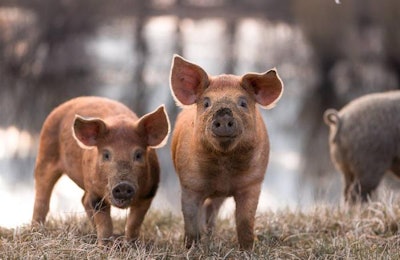
It would be easy to understand that people in the poultry industry might not be fond of the slogan, “Pork. The Other White Meat.”
After all, it’s a campaign that has been used for more than 30 years to position pork as an alternative to poultry.
According to the National Pork Board’s Pork Checkoff website, the goal of the campaign, launched in 1987, was to increase consumer demand for pork and to dispel pork’s reputation as a fatty protein. The Other White Meat was developed to position pork as a good-tasting, versatile and nutritious meat that is easy to prepare and appropriate for any meal.
But have you ever wondered what a poultry producer who is also a pork producer thinks of his pork products being referred to as The Other White Meat?
During a recent virtual press conference, "Introduction of the Opportunities in Fairness in Farming Act," Greg Gunthorp, a fourth-generation pork farmer, expressed not only his disdain for the slogan, but for the Pork Checkoff as a whole.
While Gunthorp used to sell his pigs on the commodity markets, he now direct-markets all of his pigs. The owner and proprietor of Gunthorp Farms also has a United States Department of Agriculture (USDA)-inspected slaughter and processing operation on his farm near LaGrange, Indiana.
According to the Gunthorp Farms Facebook page, the company specializes in pasture-raised pigs, chickens, ducks and turkeys, but his comments during the virtual press conference were focused on his pork operations.
Gunthorp said it “irks him beyond belief” that four-tenths of a percent on every pig his business sells has to go to the Pork Checkoff so it can “advertise a message that is completely contrary to my business interest.”
According to Gunthorp, the meat from pigs raised indoors is different in its composition and its appearance than pigs with outdoor access, so referring to pork in general as “white meat” is misleading. But the campaign was solely focused on the indoor-raised pork, he said.
“Younger animals (that) never get a chance to step on dirt, tends to yield whiter pork. That was the reason for that, to compete against chicken to be a leaner meat,” he said, adding that his pork doesn’t fit that description.
“Our pork is still marbled, the darker, brighter red color, because we produce products based on pork quality, strictly on cost,” he said.
The virtual press conference also included testimony from the following people:
- U.S. Rep. Nancy Mace, R-South Carolina
- Marty Irby, executive director at Animal Wellness Action
- Taylor Haynes, president of the Organization for Competitive Markets
- Carrie Balkcom, executive director at the American Grassfed Association
- Mike Schultz, vice-president of the Organization for Competitive Markets and founder of the Kansas Cattlemen’s Association
- Mike Weaver, past president of the Contract Poultry Growers Association of the Virginias
Mace, along with Rep. Dina Titus, D-Nevada, introduced the Opportunities for Fairness in Farming (OFF) Act, which aims to reform the USDA commodity checkoff programs.


















